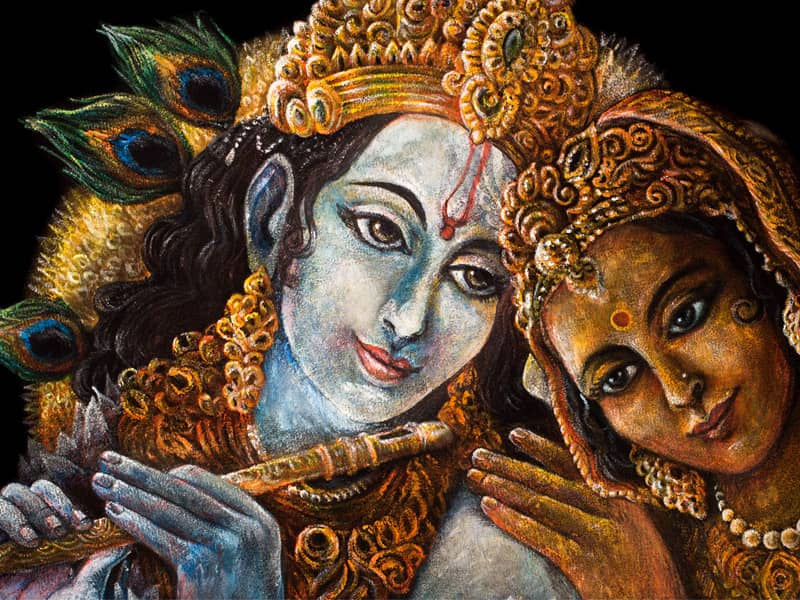Giri is a 'sadhu' (Hindu holy man) -- one of thousands of ascetics who came to this north Indian city for the world's largest religious and human gathering, which will conclude Wednesday.
The 'Maha Kumbh Mela' (great pitcher fair) opened here Jan. 9 at the meeting point of Hinduism's two holiest rivers -- the Ganges and the Yamuna -- with the mythical river Saraswati.
Authorities estimated that some 70 million Hindus from across the world came for the spiritually cleansing dip in the rivers.
The Ganges arises far away in a glacier in the central Indian Himalayas. It meets the Yamuna, also of Himalayan origin, at Allahabad, making the city, which was known in ancient times as Prayag, one of the religion's main pilgrim centres.
Held once every 12 years, the Kumbh Mela this year was specially rare because of a unique planetary configuration that occurs only once in 144 years.
Similar fairs are held in 12 year cycles in three other river bank cities in north and central India -- Hardwar, Ujjain and Nasik. It is believed that the four spots were blessed by drops of the nectar of immortality, which spilt when the gods and demons fought for control of the nectar.
Hindus believe that a dip in the Ganges at any time, 'washes' away one's sins. A dip in the rivers' confluence at Allahabad during the Kumbh, is the highest form of salvation for Hindus in this life.
The pilgrims also came to listen to sermons by holy men like Giri, who rode for seven days on his motorcycle to come here from his home, 3,200 km away in southern coastal Tamil Nadu state.
''Where else can I spread my ideas to so many people? This place is ideal to teach people the purity of life and the proper practice of Hinduism,'' says Giri. Thousands of holy men took part in religious assemblies here to debate the finer points of the faith.
He does not consider use of the motorcycle at odds with his ascetic life. The shining black, Japanese-designed vehicle was presented to him by the manufacturer to help the travelling preacher in his work.
Giri often travels across the country on preaching missions. He usually sleeps by roadsides at night, beneath a simple cloth tent.
The motorcycle was a big help in moving across the 50 sq km of Mela area. It took at least two hours to cover the area on foot. Authorities had paved the muddy ground with 80 km of metal slabs.
The ritual dip is the main objective of the pilgrims, with Jan. 14, 24 and 29 being the most auspicious days for this. About 30 million pilgrims are estimated to have performed the dip on Jan. 24, the most important of the three days.
By tradition, the holy men have the right to be the first to enter the river and do so much before daybreak. Every Kumbh Mela sees the ascetics, belonging to various sects, known as 'akharas', marching down with fanfare to the river bank.
On Jan. 29, however, the holy men discarded their colourful procession of elephants, traditional drums and bugles, while proceeding for the dip. This was done as a mark of condolence for the thousands of people killed in the western Indian earthquake on Jan. 26.
The most famous of the ascetics are the Naga sadhus, who wear little else than the ash with which they smear their bodies. They also do not talk at all. The world gets to see them only during the Kumbh for they usually live in caves or simple huts in deep forests.
Baba Amar Bharatji, a Naga, became the most famous of the group after the attention he got from the world media present at the Kumbh.
For many years, Bharatji has remained sitting in the lotus position, with his right arm stretched out. Thousands of pilgrims came looking for him after seeing his picture and reading his story in newspapers and magazines.
The ascetics included several foreigners, like middle-aged Japanese woman Keiko Aikawa, who stunned the gathering with her yoga feats.
''I do this to promote peace in the world,'' said Keiko, who spent four days and nights buried under the ground, without food, water or fresh air.
There was a near stampede as thousands of people surged forward to catch a glimpse of Keiko when she emerged from the ground, showing little signs of strain.
Giri advocates a life of simplicity for Indians, advising them to wear only hand-spun cotton clothes. This is not only environment- friendly, but will generate millions of jobs in a country where more than 60 percent of the about one billion people still live in villages, he argues.
However, not all the holy men here, believed in a life of simplicity. Many came in cars, carrying cellular phones and hand- held movie cameras.

